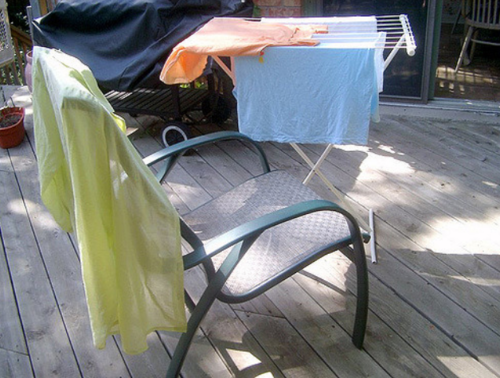
Drying is a process consisting of the removal of water or another solvent by evaporation from a solid, semi-solid or liquid. It may hence refer to a range of drying activities, such as:
- Drying food
- Drying of clothes and household items after washing
- Drying of plants such as flowers or grasses for handiwork
- Drying of grasses, seeds, etc. for feeding livestock, companion animals, fish, etc.
- Drying of items affected by flooding or water damage
- Drying of building products that need to harden to set in place (e.g. concrete)
- Drying of paint
- Drying of adhesives
- Drying of hands, the body, hair, after bathing, washing or swimming
Things to consider when drying
There are various things that can arise when using a drying process. These include:
- The need to remove sufficient moisture to prevent the growth of mould
- The need to dry sufficiently to prevent chafing or other skin problems for human beings and animals
- Avoiding cooking or baking items instead of drying them (this can happen if the temperature used is too high)
- Storage of dried food items needs to account for preventing pests, moisture and loss to elements such as wind or water
- Ensuring sufficient setting of anything that needs to hold other things in place (e.g. adhesives, concrete)
- Completing tasks that require drying in suitable conditions. For example, painting a building when the temperature is appropriate (neither too hot nor too cold), when it's not too windy, etc.